Art and science combine to show an ancient view of the Sun and Earth. Look closely to see the Sun in the center. Four images of Earth surround the Sun. Each Earth represents the different seasons, spring, summer, autumn and winter. Original art by Andreas Cellarius (1596-1665).
Click on image for full size
(c)1995 Visual Language, All Rights Reserved
The Changing Night Sky
If you look at the night sky different times of the year you see
different constellations. This change is due to the motion of the Earth in its
orbit around the Sun. Each day a few stars are visible in the east that were not
visible the night before. If you were to measure how much the sky "shifted" from
one day to the next you would discover that it "shifts" approximately one degree
per day. This should not be surprising because, if you think about it there are
365 days per year and 360 degrees in a circle. Anyway,
the sky doesn't shift, it is another case of
apparent motion. The "shift" of the sky is really the motion of the earth
around the sun.
You might also be interested in:

How did life evolve on Earth? The answer to this question can help us understand our past and prepare for our future. Although evolution provides credible and reliable answers, polls show that many people turn away from science, seeking other explanations with which they are more comfortable.
...more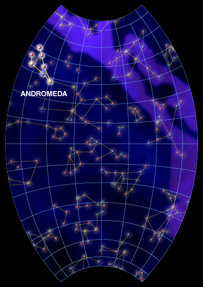
Andromeda is a "V" shaped constellation best viewed in the fall if you live in the Northern Hemisphere. Andromeda lies close to the north pole, so only a few in the Southern Hemisphere can see this strangely
...more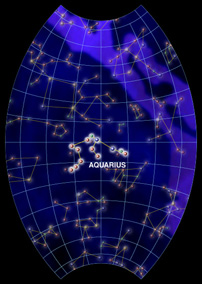
Aquarius is a member of the Zodiac, a group of constellations that the Sun travels through each year. It is best viewed in the fall in the southern sky, although much of the northern hemisphere can see
...more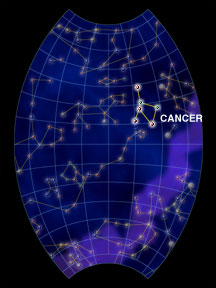
Cancer, the Crab, is a member of the Zodiac, a group of constellations that the Sun travels through each year. Cancer is best seen during the month of March, but is visible from December through June.
...more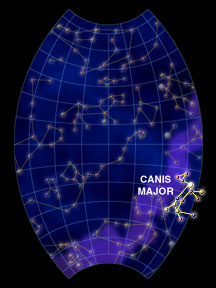
Canis Major is known as the Great Dog. In Greek myth, it is said that this constellation, along with Canis Minor, are Orion's hunting dogs. Canis Major was one of the most important constellations in
...more
The constellation Capricornus represents the figure of either a goat or a sea-goat in the sky. Capricornus is also a member of the Zodiac, a special group of constellations that the Sun travels through
...more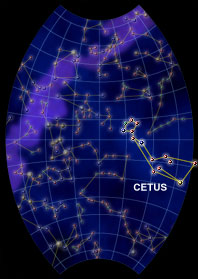
The constellation Cetus represents the Sea Monster. It is one of the largest constellations known. In classical civilizations, the figure was the giant sea monster that almost ate Andromeda. King Cepheus
...more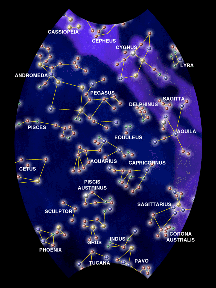
The unvarying aspect of the relationships of the stars' positions may have suggested to the ancients something that was analogous to their beliefs about the universe. It is not surprising that they chose
...more















